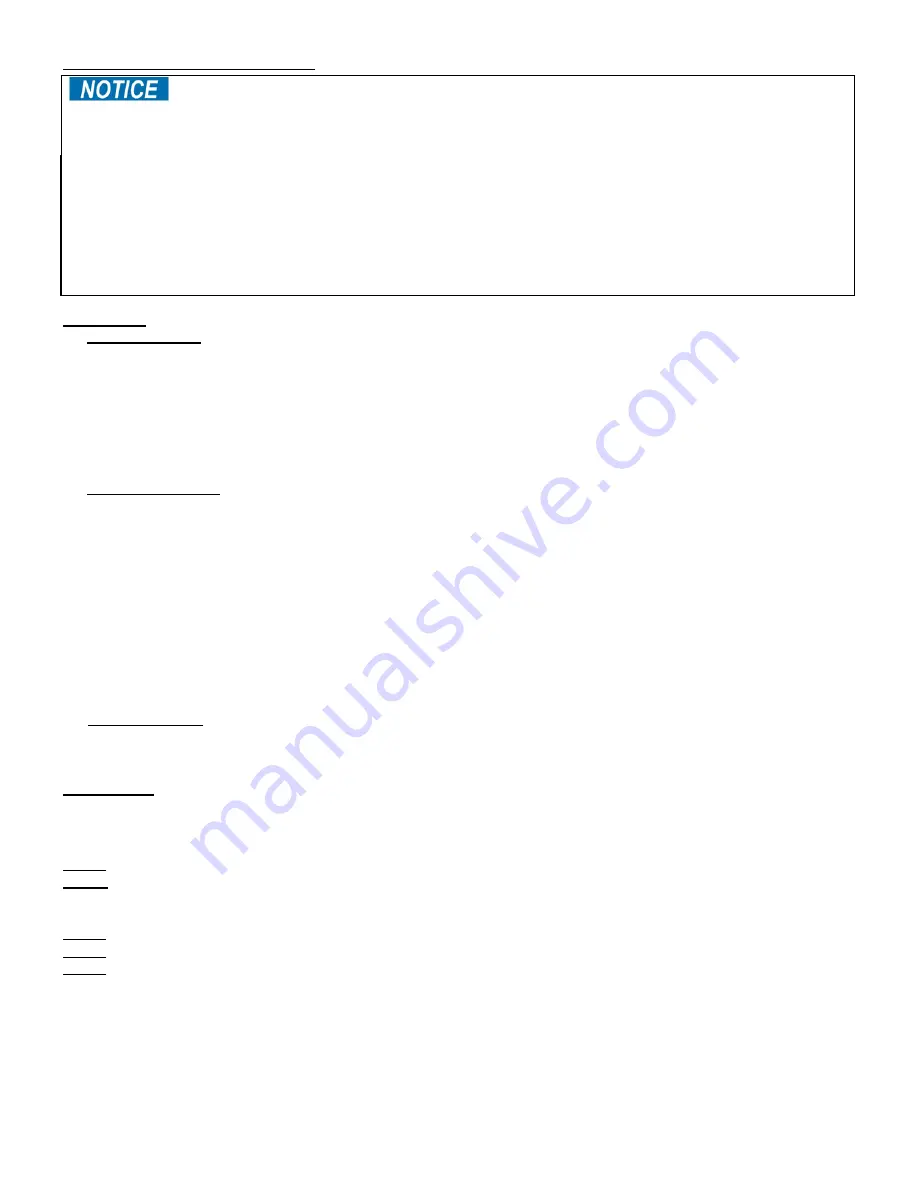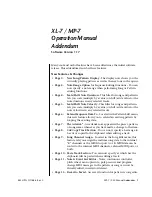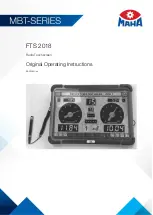
Rev. 7/14/2016
PMPS, MANUAL
Copyright 2016 Vestil Manufacturing Corp.
Page 19 of 22
Inspections & Maintenance:
Regular maintenance is essential to keep this product in nominal condition. Before beginning
maintenance, completely unload the forks and lower them.
Always use this product in accordance with the
instructions in this manual and consistently with any training relevant to machines, devices, etc. used in conjunction
with this product.
o
Relieve hydraulic pressure whenever the unit is not in use by fully lowering the forks.
o
Keep the product clean & dry. Lubricate moving parts at least once per month.
o
ONLY use manufacturer-approved replacement parts. Vestil is not responsible for issues or malfunctions that
result from the use of unapproved replacement parts.
o
ONLY use ISO AW-32 hydraulic fluid or its equal in the hydraulic system.
Do not use brake fluid or jack oils in the
hydraulic system. If oil is needed, use an anti-wear hydraulic oil with a viscosity grade of 150 SUS at 100°F, (ISO 32
cSt @ 40°C), or Dexron transmission fluid.
o
Contact the manufacturer for MSDS information.
Inspections:
(A) Before Each Use--Inspect the following:
1. Wiring: inspect the electrical wiring for cuts or frays;
2. Casters: examine the casters and confirm normal operating condition;
3. Hydraulic hoses: check for pinches, punctures, or loose connections;
4. Structure: inspect the base and frame for deformations and cracked welds;
5. Forks, carriage and mast: cycle the forks up and down while listening and watching unusual noise, motion, or
binding;
6. Pushbutton controller: inspect the controller and look for damage that exposes
(B) Monthly Inspections--at least once per month check the following:
1. Oil level. Lower the forks completely and unload them. Oil should be 1” - 1
1
/
2
" below the top of the
tank/reservoir. Add oil as necessary. Look for oil leaking from hoses, the cylinder, or the reservoir. (See
“Troubleshooting” (p. 19) and correct as appropriate.)
2. Battery: check the water level in the battery
.
(DC models only)
3. Clevis and pivot points: inspect for excessive wear.
4. Hydraulic system, wiring, and pushbutton control: Check for worn or damaged hydraulic hoses, electrical
wires, and cords. Repair as necessary.
5. Carriage rollers (see diagrams on p. 4-5): check rollers and retaining hardware for normal condition.
6. Forks, carriage and mast: cycle the forks up (to the top of the mast) and back down while listening and
watching for unusual noise, motion, or binding.
7. Labels (see “Labeling diagram; p. 20): confirm that all labels are in place and easily readable.
8. Surfaces: remove dirt and debris
.
(C) Yearly Inspection
Hydraulic oil should be changed at least once a year or sooner if the oil darkens or becomes gritty. Flush the reservoir
before refilling. Similarly, if the oil appears milky, water is present and the oil should be changed.
Maintenance:
Implement a maintenance program to ensure the proper function and safety of the device. ANSI/ITSDF standard
B56.10 describes some recommended maintenance procedures. The following steps should be utilized in conjunction
with those recommendations.
Step 1: Tag the unit, “Out of Service.”
Step 2: Conduct a “Before each use”. If deformity, corrosion, rusting, or excessive wear of structural members is
present, DO NOT use the pallet handler. Contact Vestil for instructions. If the carriage does not move smoothly or
makes noise as it moves up or down the mast, apply a silicon wax or silicon spray to the inside of the mast frame.
Step 3: Remove any dirt or other matter from the forks and other surfaces.
Step 4: Perform all other necessary adjustments and/or repairs. DO NOT modify the lifter.
Step 5: Make a dated record of the repairs, adjustments and/or replacements.
Replacement Parts:
Our company uses carefully selected parts in our equipment. Whenever repairs are necessary, be certain that only
manufacturer approved replacement parts are used. To order parts for your equipment, contact Customer Service at the
factory. In any correspondence with the factory please include the Serial Number which is inscribed on the nameplate of
the equipment. Use only the part numbers
provided in this Owner's Manual. When ordering parts for AC power units,
please be prepared with the motor phase and voltage of the equipment.




































